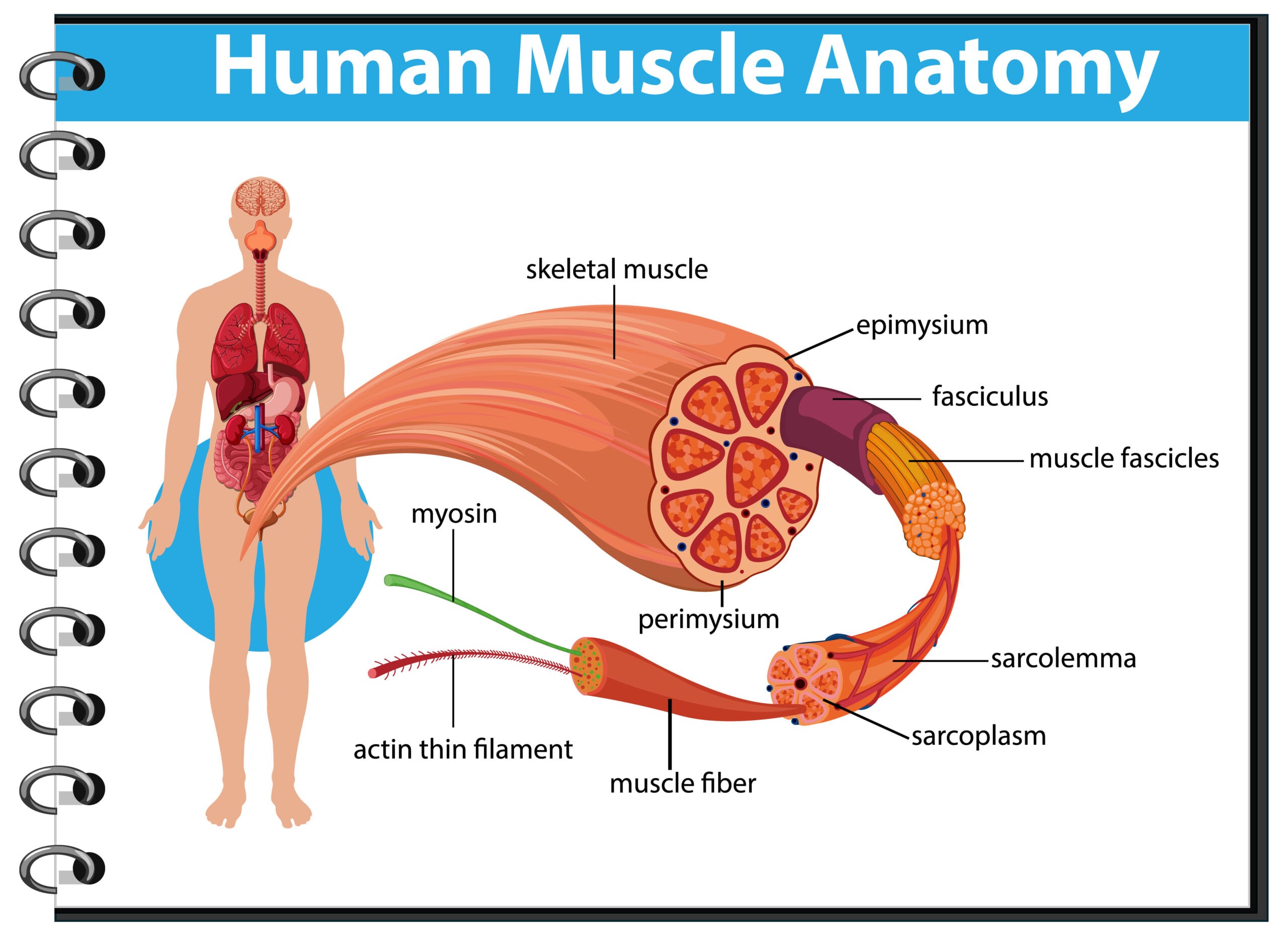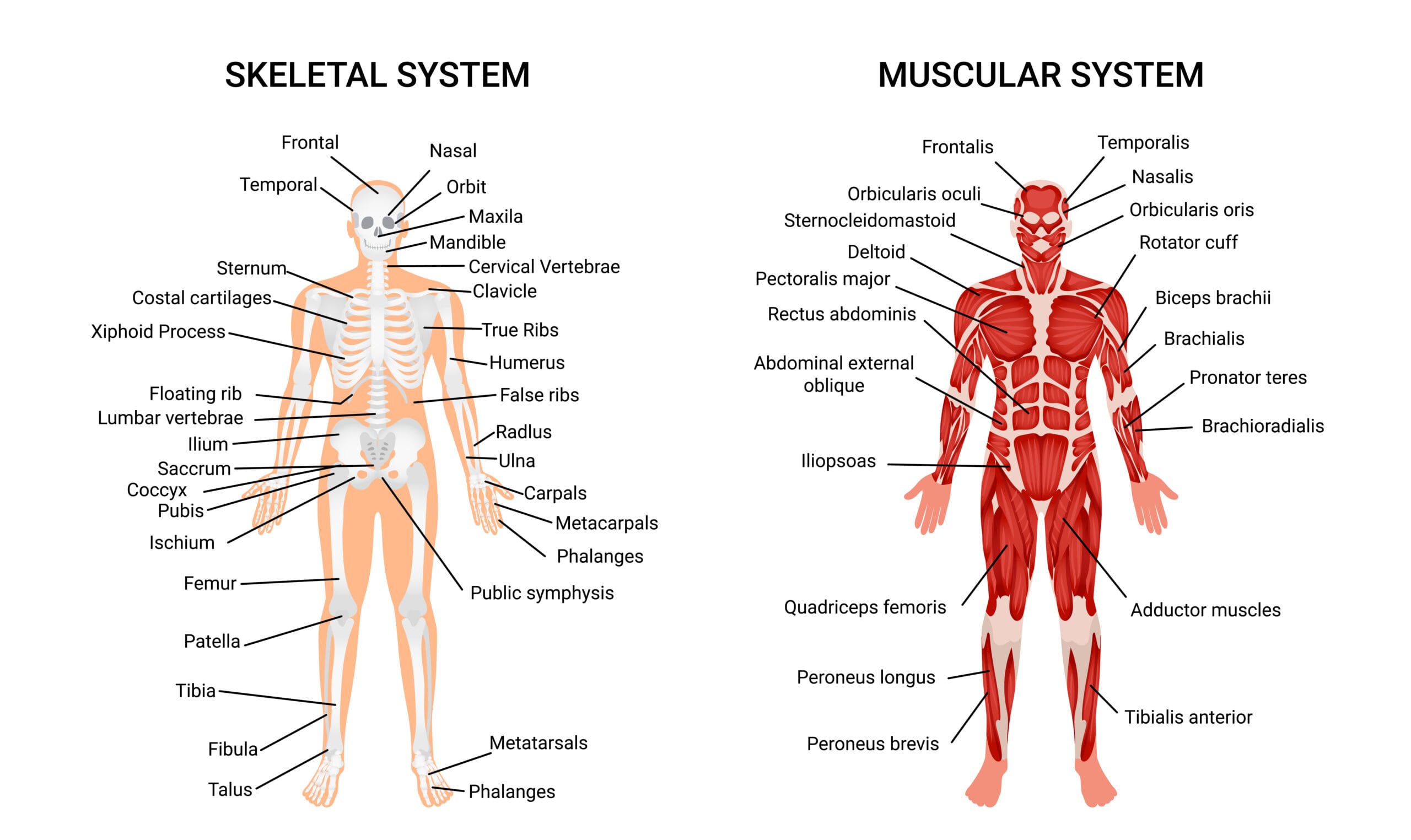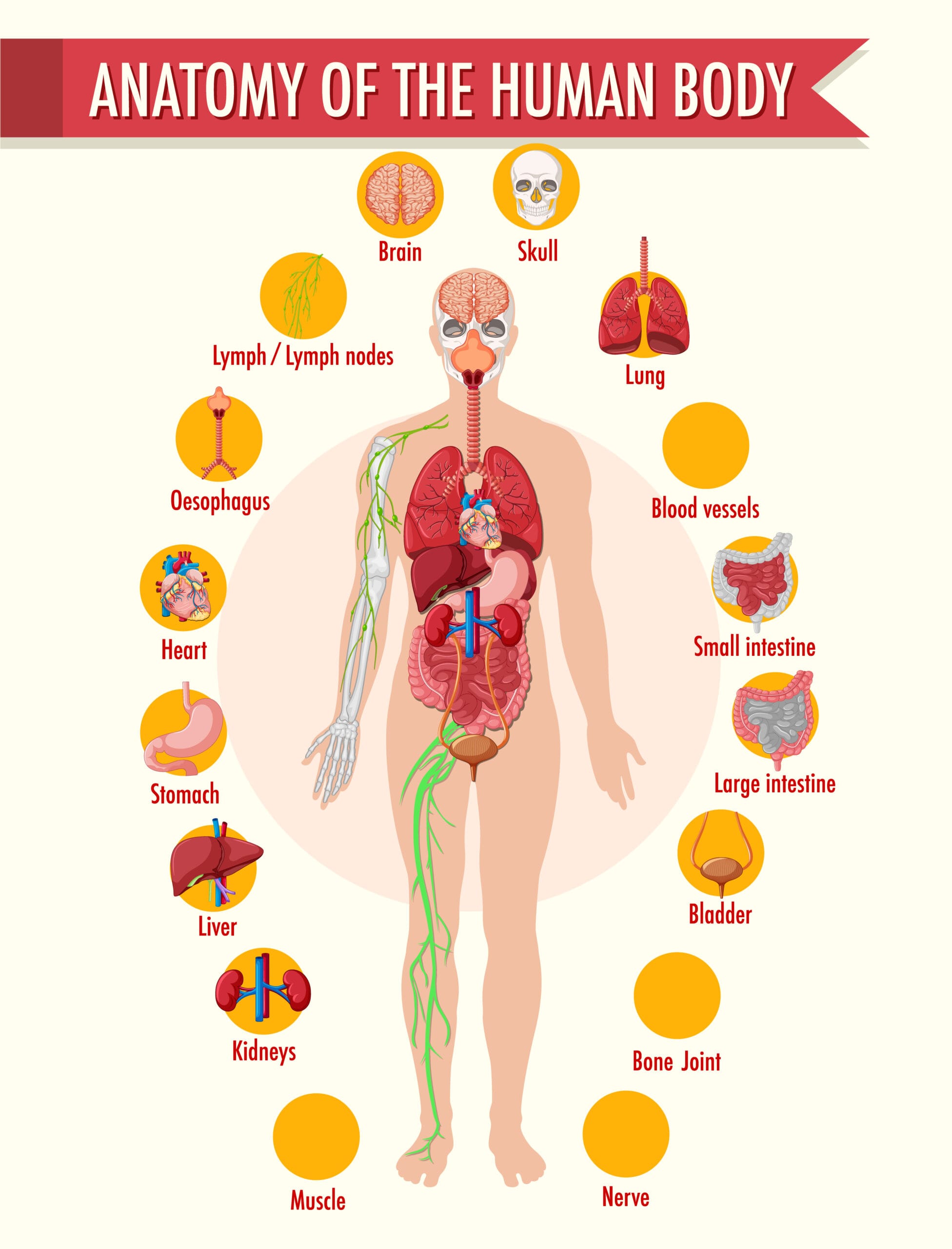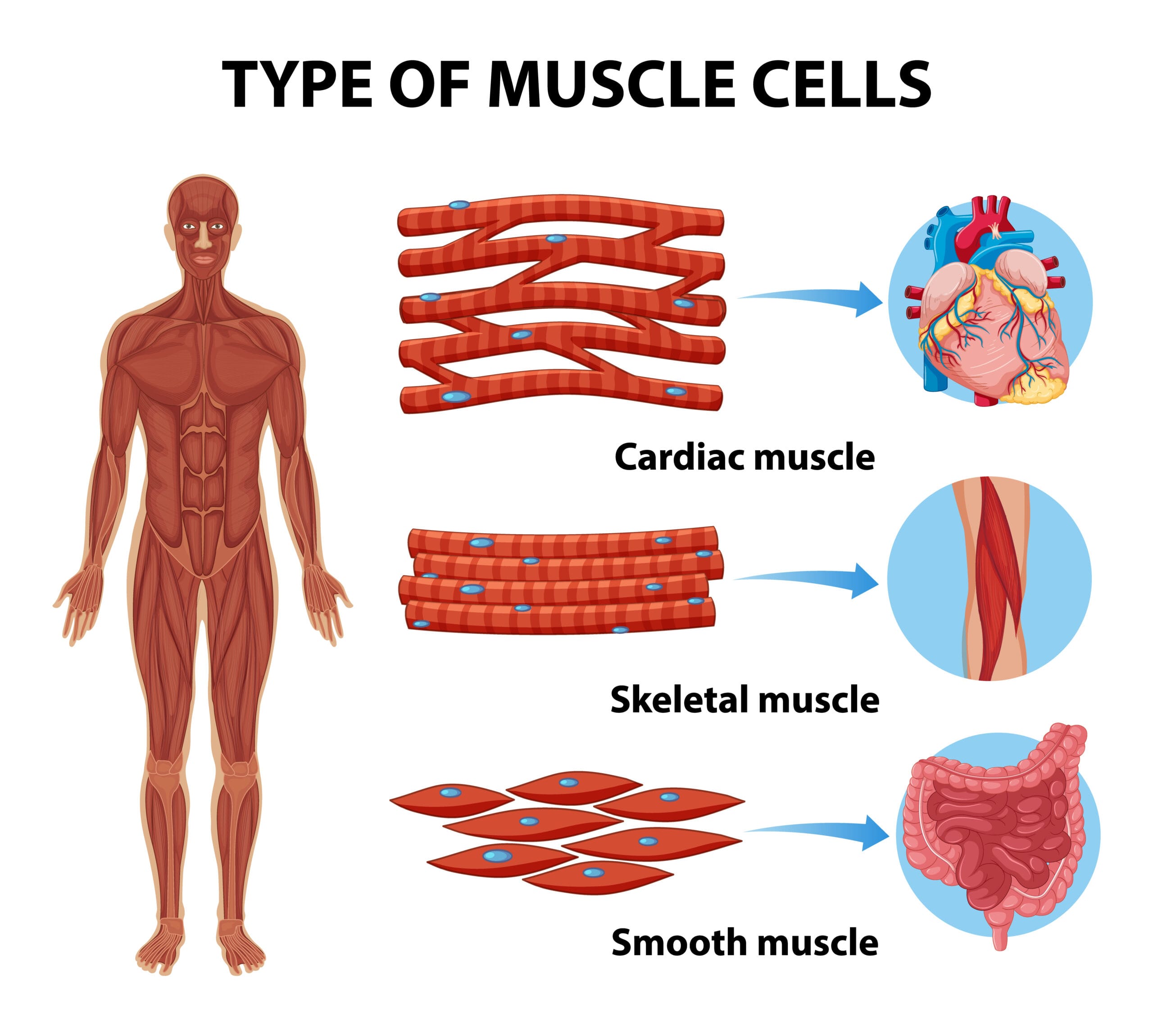Muscles

The human body contains over 600 muscles that are in near-constant use. While some of these muscles facilitate body movement, others support the proper functioning of your internal organs and keep you alive. Occasional muscle aches or pains are normal, but you should not ignore persistent (long-term) soreness or weakness.
What are muscles?
Muscles: The Powerful Drivers of the Body
Muscles are soft, contractile tissues found throughout the human body. These versatile structures enable a wide range of movements, from stabilizing the body to powering an endurance run. Muscles also play a crucial role in supporting and moving internal organs, with the heart being a particularly hardworking muscle that beats thousands of times daily to sustain life.
Given the ubiquity of muscles, injuries and health conditions affecting them are relatively common occurrences. While the occasional sore muscle is normal, persistent pain, weakness, or other symptoms may signal more serious underlying issues. If muscle discomfort lasts more than a week or impairs mobility, it’s advisable to consult a healthcare provider. Seek immediate emergency care if experiencing difficulties with breathing or swallowing.
Function
What is muscle’s function?

Muscles: The Body’s Movers and Shakers
Muscles are the powerhouses that drive your body’s movements. They perform two primary types of movements:
Voluntary Movements: These are the actions you consciously control. Using your nervous system, you choose to perform a movement, and your muscles respond accordingly. Scrolling on your phone or sprinting around a track are examples of voluntary movements.
Involuntary Movements: These happen automatically, without any conscious thought on your part. The muscles in and around your organs, like your beating heart and the muscles that help you breathe, move involuntarily to keep your body functioning properly.
Muscles work in combination, using both voluntary and involuntary movements, to support nearly all of your body’s systems and functions:
- Vision and hearing
- Breathing, speaking, and swallowing
- Digestion and waste elimination
- Locomotion, posture, and balance
- Pumping blood through the cardiovascular system
- Enabling childbirth
Muscles also store and release energy as part of your body’s metabolism.
By understanding the two key types of muscle movements, you can appreciate the incredible versatility and importance of these hardworking tissues in maintaining your overall health and well-being.
Anatomy

What is the anatomy of muscles?
Your muscles are composed of thousands of small, interwoven fibers. These fibers contract and relax, working together to move your body and organs. Your muscles are like a quilt, crisscrossing in all directions to facilitate your movements.
There are three main types of muscle tissue in the human body:

Skeletal muscles
Skeletal muscles are voluntary, working with your bones, tendons, and ligaments to support your weight and facilitate movement. These muscles can be fast-twitch for quick bursts of energy or slow-twitch for endurance.
Cardiac muscle
Cardiac muscle makes up the middle layer of your heart, pumping blood through the cardiovascular system. As an involuntary muscle, your heart beats on its own.
Smooth muscles
Smooth muscles line the insides of certain organs, performing essential functions like moving waste through the digestive system or helping the lungs expand during breathing. These muscles operate involuntarily.
Smooth muscles play an important role in many body systems, including the:
- Female reproductive system and male reproductive system.
- Urinary system.
- Respiratory system.
- Digestive system.
The human body contains over 600 muscles, supporting almost every part of the body, many of which go unnoticed. Common muscle issues include strains, cramps, and conditions like fibromyalgia. Healthcare providers use various tests to diagnose and treat muscle problems.
Maintaining muscle health involves regular stretching, gradual increases in physical activity, and seeking medical attention for persistent pain or other concerning symptoms. By understanding the different muscle types and how to care for them properly, You can keep your musculoskeletal system strong and functioning optimally.
How many muscles are in the human body?
There are more than 600 muscles located almost everywhere throughout your body.
Your first thought when picturing muscles might be the biceps in your upper arms or the quads in your thighs, but muscles support almost every part of your body, many of which you’ll never notice.
Conditions and Disorders
Electrolytes: The Unsung Heroes of Your Body
What are common injuries or health conditions that affect muscles?
Muscle strains, also known as pulled muscles, are the most prevalent type of muscle injury. These occur when a muscle is overexerted, causing the individual muscle fibers to stretch beyond their capacity and tear. This is similar to the way an old, worn-out bungee cord can snap when placed under too much strain.
Many health conditions can affect your muscles, too, including:
- Fibromyalgia.
- Myopathies.
- Myositis and polymyositis.
- Infections, including the flu (influenza) and COVID-19.
- Amyotrophic later sclerosis (ALS).
- Cardiovascular disease.
Muscle symptoms
The most common symptoms of a muscle injury or health condition include:
- Muscle pain.
- Muscle weakness.
- Stiffness.
- Muscle spasms (cramps).
- Swelling.
- Bruising.
- Skin discoloration.
Muscle tests
A healthcare provider may use a few different kinds of tests to diagnose muscle conditions or injuries:
- Blood tests.
- Electromyography (EMG).
- Magnetic resonance imaging (MRI).
- Ultrasound.
- Muscle biopsy.
How do healthcare providers treat muscle issues?
The treatments you’ll need depend on your specific health condition or injury. Some conditions that affect the muscles are short-term issues, while others are chronic conditions that require long-term symptom management.
You can manage many muscle injuries at home with the RICE method:
Rest: Avoid any activities that may have caused your injury. Refrain from using the injured body part while it heals.
Ice: Apply a cold compress to the injured area for 15 minutes at a time, several times per day. Wrap ice packs in a towel or thin cloth to prevent direct contact with your skin.
Compression: Wrap an elastic bandage around the injured muscle to help reduce swelling. Your healthcare provider can demonstrate the proper technique for applying a compression wrap.
Elevation: Keep the injured muscle elevated above the level of your heart as often as possible.
Care
The Power of Essential Amino Acids (EAA’s) for Peak Performance
How can I take care of my muscles?
Preventing Muscle Injuries: The Importance of Stretching and Warm-ups
Stretching and warming up before exercise or physical activity are the best ways to prevent muscle injuries. Increasing your overall flexibility will also protect your muscles from strains and tears. The more flexible you are, the more room your muscle fibers have to stretch before reaching their limit and beginning to tear.
Gradually Increase Your Activity Level
It’s important to increase your activity level gradually rather than suddenly ramping up your training intensity or exercising significantly more often than usual. This gradual approach helps condition your muscles and reduce the risk of injury.
When should I see a healthcare provider?
If you’re experiencing muscle pain that doesn’t improve within a week with rest and at-home treatments, visit a healthcare provider. Seek immediate medical attention at the emergency room if you have any of the following symptoms:
- Sudden chest pain or other heart attack symptoms.
- Trouble breathing or swallowing.
- Severe pain, muscle spasms or muscle weakness.
- Loss of balance.
- Suddenly worse vision.
- Problems controlling your bladder or bowels.
Additional Common Questions
Is a muscle an organ or a tissue?
Muscles are a type of tissue found throughout the body. Smooth muscle tissue lines some of the body’s internal organs, but most organs are also composed of other tissue types. Healthcare providers often refer to the muscular system as a distinct anatomical group that includes all the body’s muscles. Muscles may also be considered part of other bodily systems.
The heart is the only organ that is also a muscle. It is made of a specialized type of muscle tissue called cardiac muscle. The heart is the only place in the human body where cardiac muscle tissue is found.
What are muscle groups?
Fitness trainers and physical therapists often discuss strengthening or exercising specific muscle groups. However, these muscle groupings are typically broad and imprecise.
It’s common practice to categorize muscles based on their location (e.g., chest, leg, back) or the type of movement they facilitate (such as abductors, flexors, or extensors). In contrast, healthcare providers typically classify muscles solely based on the type of tissue they are composed of.
A note from The Muscle Beast
Your body has over 600 muscles, and they’re constantly working, even when you’re not thinking about them. Some muscles are visible and you can feel them, especially after a workout. Others, like your heart and the muscles lining your organs, operate silently to keep you alive. Occasional soreness or aches are normal, but persistent muscle pain warrants a visit to your healthcare provider, as it could signal an underlying condition that needs diagnosis and treatment.
Remember, you don’t have to look like a professional athlete to be healthy. Talk to your provider about ways to support your overall muscle health. They can recommend exercises, movements, and physical activities to keep you strong, safe, and well.
Must Read
Anabolic Steroids: Myths Busted
For More Fitness Updates




